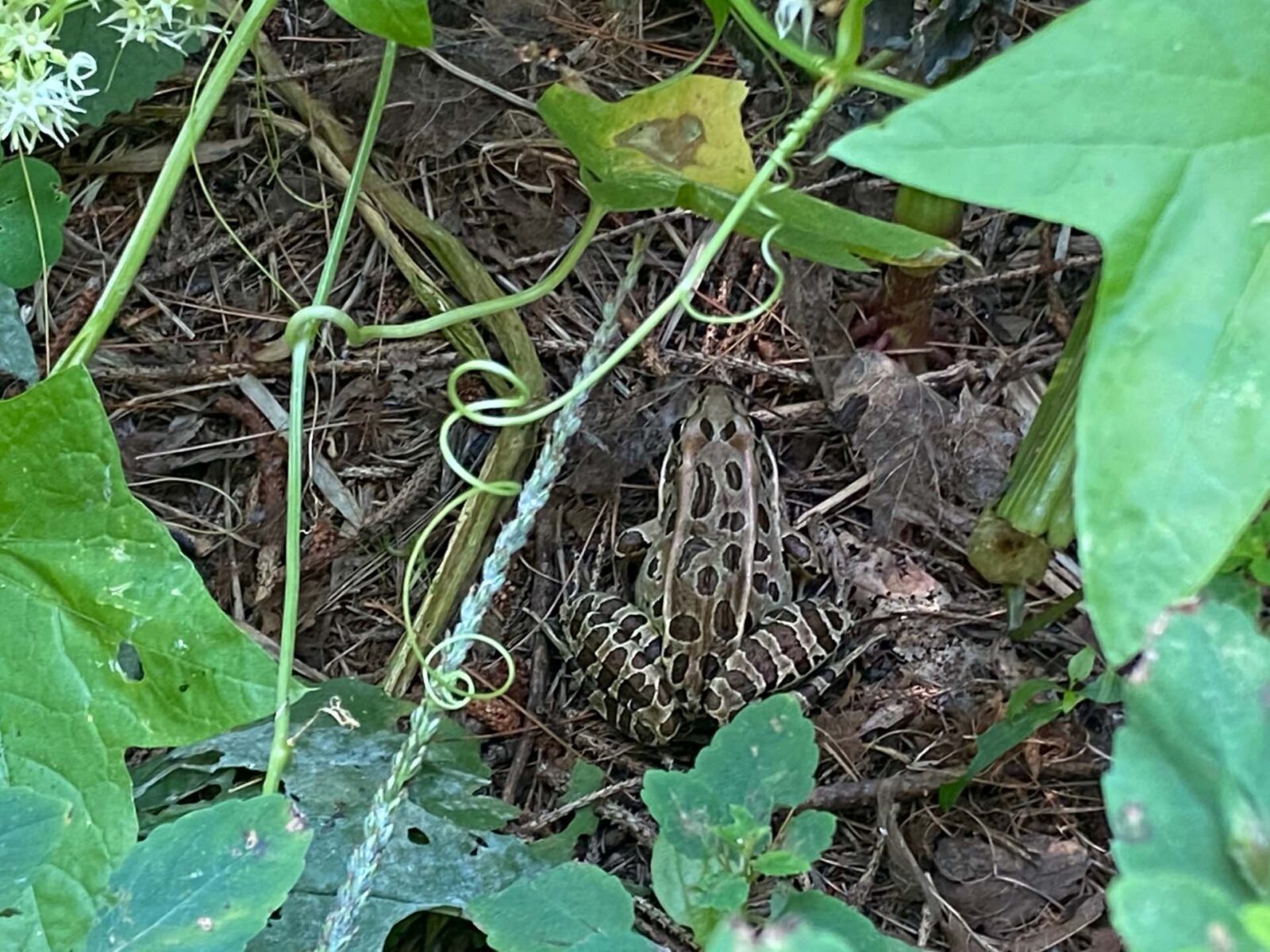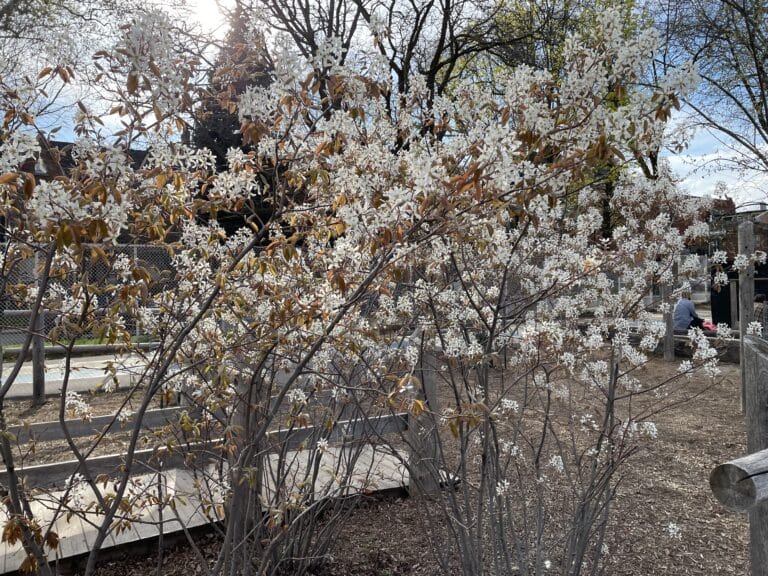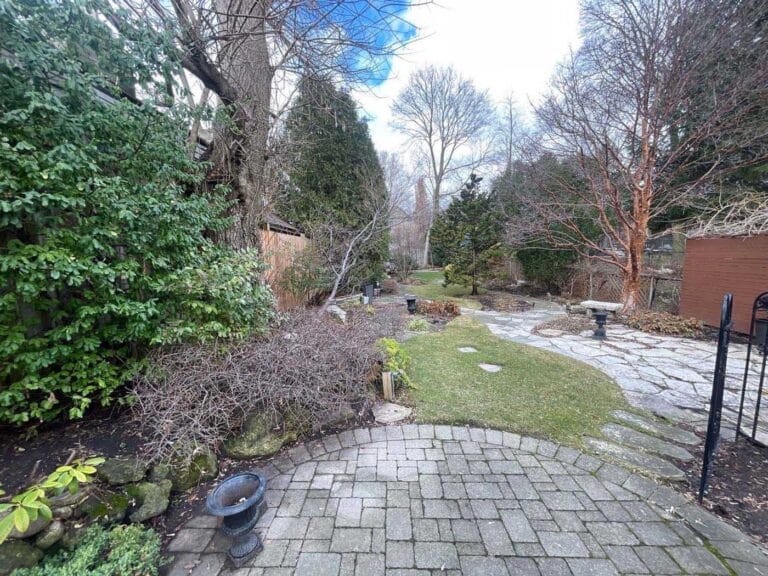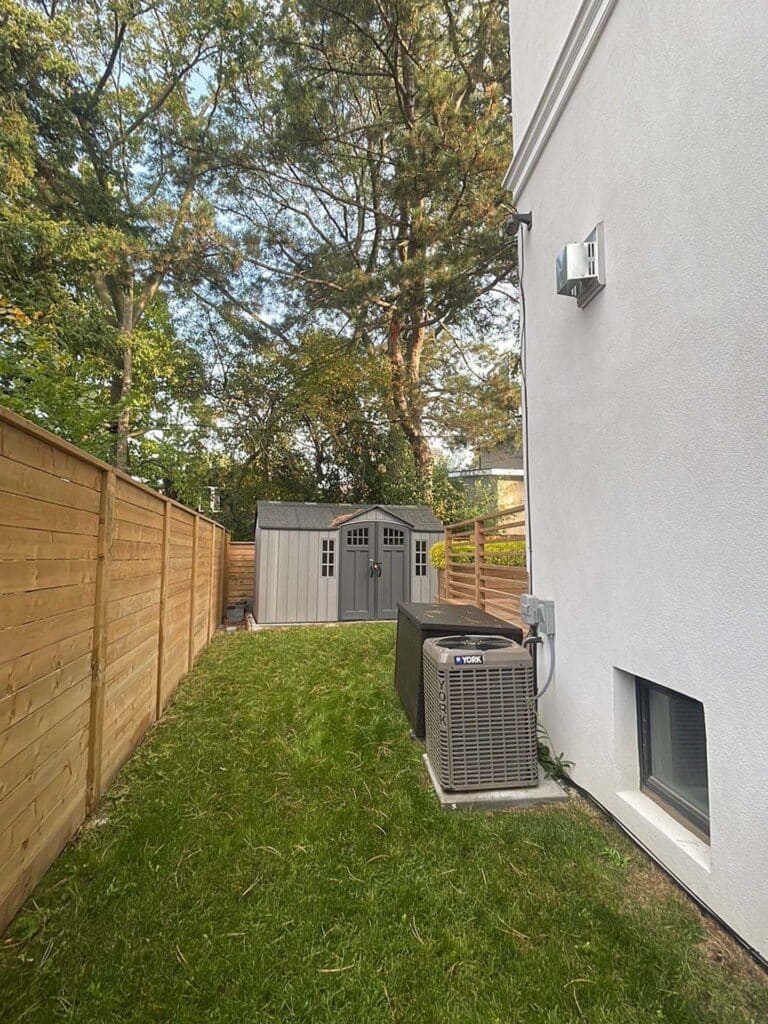Why Urban Biodiversity Monitoring Matters in Toronto
Trees play a pivotal role in urban biodiversity — providing habitat, food, and shelter for a variety of species. By tracking and monitoring key biodiversity signals you can explore the ecosystems in our city and contribute to environmental sustainability. Biodiversity monitoring and reporting helps inform key urban forestry and environmental policies. It’s a great way to get engaged in local environmental issues that have a big impact on our city.
In Toronto, monitoring areas like the Don Valley or High Park can deepen your understanding of how trees influence local ecosystems. Understanding local wildlife patterns, tree species and natural cycles is a great way to build your knowledge of the natural world. And you don’t have to go far from home, you can also do it in your own backyard and neighbourhood!
Measuring biodiversity isn’t just for scientists! As a Toronto resident, you can play a pivotal role in monitoring and improving urban ecosystems by observing the trees closest to your home or business.

Simple Steps to Improve Urban Biodiversity
Observing biodiversity starts with simple, practical steps that can have a significant impact. By focusing on the trees and wildlife in your backyard or neighborhood, you contribute to Toronto’s broader biodiversity goals and urban forestry practices.
First, Start with Research! You can learn about common tree species in Toronto, such as Silver Maple, White Pine, or Serviceberry, and how they support urban biodiversity and native plants. Learn about Toronto Tree Equity scores and the canopy coverage in your neighbourhood. Resources like the Ontario Tree Atlas can guide your understanding of native plants and biodiversity. The Toronto Public Library’s Biodiversity Booklets and the Ontario Tree Atlas are excellent resources.
Track, Monitor, Document
- Visual Surveys: Spend time observing your yard or garden. Record what you see—birds, insects, mammals, and other wildlife. Take note of which species seem most attracted to the trees or shrubs you’ve planted.
- Create a Tree Inventory: Make a simple map or list of trees on your property or in your neighborhood. Include their species, approximate age, and health condition. This is a great way to involve children or neighbors in learning about local trees.
- Leaf Litter Analysis: Examine fallen leaves for signs of insect activity. Leaf litter often harbors a diverse array of microorganisms and small creatures, which are essential for healthy soil.
- Bird Counts: Track the variety and number of birds that visit your trees. You can participate in annual events like the Great Backyard Bird Count for a broader contribution to citizen science. The Toronto Public Library even has a Birding Kit creating by Birds Canada you can borrow for free from the Runnymede library.
- Pollinator Surveys: Try to identify and count pollinators such as bees, butterflies, and beetles. The abundance and variety of pollinators often indicate the health of your ecosystem.
- Phenology Tracking: Observe and record natural events such as the timing of leaf budding, flowering, and fruiting in your trees. This can give you insights into how your plants are responding to the local climate.
For more resources, visit organizations like Birds Canada or the Toronto and Region Conservation Authority (TRCA), which offer citizen science programs and guides to biodiversity monitoring. These programs can help direct your data to specific Toronto initiatives, ensuring individual efforts contribute meaningfully to city-wide goals. These activities are great for engaging families, and they build community awareness about the importance of trees in supporting urban ecosystems.
Best Tools and Citizen Science Programs for Urban Forest Biodiversity
Engaging with biodiversity in Toronto requires leveraging accessible tools and techniques to monitor and support urban forestry efforts. Technology provides innovative ways to connect individual observations with city-wide biodiversity goals.
Your smartphone can be a powerful ally in biodiversity monitoring. Here are some practical ways to get involved:
- Use Apps for Data Collection: Tools like iNaturalist and eBird allow you to record and share your observations with a global community, while also contributing valuable data to municipal initiatives like Toronto’s Urban Forestry program or national biodiversity strategies. For bird calls, apps like Merlin Bird ID are user-friendly and accurate – they can help you identify bird calls and insect sounds in real-time, making this a fun activity for families or children
- Wildlife Cameras: Set up motion-activated cameras to capture nocturnal visitors like raccoons, owls, or bats. Ensure placement avoids areas with heavy pedestrian or pet traffic.
- GIS Mapping Tools: Free tools like Google Earth or Ontario’s Land Information System (OLIS) can help you visualize changes in your local biodiversity over time. These are particularly useful for planning native plant or tree projects.
Your data can contribute directly to Toronto’s Pollinator Protection Strategy and the Biodiversity Strategy, which aim to create pollinator-friendly habitats and expand tree canopies across the city. For example, citizen science efforts can inform tree-planting strategies in Toronto’s Urban Forestry program, identifying areas where additional tree coverage would support biodiversity.
Tips for Getting Involved in Biodiversity in Toronto
Don’t do it alone! Monitoring your trees and biodiversity at home can be a great way to get engaged with your community and neighbours or provide opportunities for the kids in your life to learn about nature. Hands on environmental activities are great ways to connect with people in your life and community over shared interests.
- Family Nature Walks: Organize neighborhood walks to identify local flora and fauna using apps or printed guides. This is a great way to engage children in learning about biodiversity and connect them to nature.
- Tree and Pollinator Adoptions: “Adopt” a specific tree or pollinator species to monitor and care for in your neighbourhood by working with local residents’ associations, community groups, schools or your own family to track the progress.
- Citizen Science Projects: Get involved with organizations like Birds Canada, which supports initiatives like the Christmas Bird Count, or join programs through the Toronto and Region Conservation Authority (TRCA) for local citizen science opportunities or tree planting and environmental clean up days.
How Monitoring Trees Can Help Overcome Toronto’s Urban Forestry Challenges
In Toronto, rapid urbanization poses challenges to tree health and ecosystem resilience. Addressing issues like invasive species, compacted soils, and pollution is critical to enhancing biodiversity and sustaining healthy urban forests. For example, focusing on Toronto tree care practices such as regular aeration, implementing structured soils, and integrating green infrastructure can greatly improve tree health and biodiversity outcomes.
- Seasonal Variability: Biodiversity observations will change with Toronto’s distinct seasons. For instance, shifts in phenology due to climate change are affecting the timing of flowering and leafing in native species like maples and oaks. Record data consistently throughout the year to understand these trends and their impacts on local ecosystems.
- Noise Pollution: Toronto’s high-density urban areas, such as downtown neighborhoods, generate significant noise that can disrupt bird communication and reduce biodiversity. Using acoustic monitoring tools like song meters can help identify species impacted by noise pollution and guide mitigation strategies.
- Light Pollution: Excessive artificial lighting in Toronto’s urban areas can disrupt natural behaviors of nocturnal species such as moths, Toronto birds and bats, reducing their ecological roles in pollination and pest control. Projects like Toronto’s Lights Out program aim to mitigate these effects by encouraging reduced lighting during bird migration seasons and raising awareness about its impact on biodiversity.
- Urban Tree Challenges: Compact soils and contamination, common in urban Toronto, can impede root growth and reduce tree longevity. By implementing Toronto-specific tree care strategies like structured soils and aeration, you can create healthier root systems and improve the trees’ role in biodiversity.

Key Trends in Urban Forestry and Biodiversity Monitoring for 2025
Urban forestry in Toronto is undergoing exciting changes. Innovative strategies are enhancing biodiversity and resilience, creating thriving urban ecosystems that tackle both local and global challenges. Key trends include:
- Climate-Smart Biodiversity: Toronto is increasingly focusing on climate-resilient tree species that can adapt to changing weather patterns while supporting biodiversity. Incorporating native species like Bur Oak or Eastern Hemlock alongside drought-resistant options ensures a robust urban forest capable of mitigating climate impacts.
- Technology-Enhanced Monitoring: Advanced tools such as drones, AI-powered apps, and predictive analytics are becoming integral for monitoring tree health and urban biodiversity, offering innovative methods to enhance tree science and management in Toronto. Toronto’s use of tools like i-Tree Eco for canopy assessment highlights this trend.
- Equity-Driven Green Space Development: Expanding access to green spaces in underserved neighborhoods is a priority for Toronto, particularly in aligning citizen efforts with municipal programs like the Ravine Strategy, which aims to enhance tree coverage and ecological connectivity. Programs such as Park People’s “Green Space Connect” in Toronto aim to ensure equitable distribution of urban forestry benefits, enhancing community well-being.
- Citizen Engagement and Policy Integration: Connecting citizen science efforts with municipal policies strengthens urban biodiversity strategies. For example, residents’ biodiversity data can directly inform Toronto’s tree-planting initiatives, aligning community involvement with citywide goals like increasing tree canopy cover.
Tree Care Industry Innovations in 2025
What’s next for urban forestry in Toronto? Certified arborists and tree care companies will play a pivotal role in incorporating these trends into their practices. A commitment to ongoing education and science will be key to improving outcomes. As leaders in this space, Vista Tree Management exemplifies how arborists can ensure better biodiversity and urban resilience in a rapidly evolving field. How will Toronto’s tree care industry rise to these challenges and opportunities? We’ll be addressing some of the key opportunities for the tree care industry in subsequent posts.
Sharing Your Biodiversity Insights to Enhance Toronto’s Green Spaces
Documenting and sharing your biodiversity observations deepens your understanding of local ecosystems while contributing valuable insights to community and city-wide initiatives.
For example, sharing data with Toronto’s Urban Forestry program can inform tree-planting priorities, ensuring that the right species are planted in the right locations to maximize biodiversity benefits. You can also check out how your neighbourhood or property stacks up against the city by looking at the Tree Equity Map.
By tracking species in your yard and contributing to programs like Toronto’s Biodiversity Strategy, you help create resilient, interconnected ecosystems that benefit the entire city.
- Start a Blog or Social Media Account: Share your observations and insights to inspire others in your community, and consider engaging with Vista Tree Management for expert advice and collaboration on biodiversity initiatives.
- Host a “Biodiversity Day” Event: Showcase the species that call your home garden their habitat.
- Collaborate with Local Schools: Engage students in biodiversity monitoring programs to promote environmental education.
- Present Your Findings to City Planners or Local Groups: Your data could inform tree-planting projects, green space development, or local conservation initiatives.
- Help Track Invasive Species or Log Local Wildlife: Ontario’s Invasive Species Council tracks invasive species, while the Canadian Food and Inspection Agency tracks instances of invasive pests and wildlife. Lots of other programs like the Heritage Tree mapping project, Homegrown National Park and more keep track of significant trees or native species. Sharing biodiversity info with these projects can promote awareness of opportunities, successes and threats to Toronto trees and urban canopy.
Sharing your biodiversity observations fosters collective will and action. By pooling data and experiences, Toronto residents can better understand the challenges and opportunities in enhancing urban biodiversity. This shared knowledge drives coordinated efforts to improve the city’s urban canopy and biodiversity, creating a healthier environment for everyone.
Monitoring Biodiversity to Strengthen Toronto’s Urban Forest Resilience
Trees in urban environments are biodiversity powerhouses, mitigating heat islands, reducing air pollution, and supporting wildlife corridors. Monitoring biodiversity around these trees provides critical data on how urban challenges like soil compaction and limited space impact their growth and ecological roles. For instance, understanding where compaction is most severe can inform targeted aeration efforts, directly improving tree health and biodiversity outcomes.
Information about invasive species like Norway Maples or Tree of Heaven can also help inform urban forestry professionals and urban planners about the success of native planting initiatives and progress towards their goals.
Planting Trees and Revitalizing Urban Spaces
Planting native and climate-resilient tree species not only supports biodiversity but also provides essential data points for monitoring how these species adapt to Toronto’s unique urban environment. Tracking their growth and survival through monitoring efforts reveals insights into their role in supporting local wildlife and long-term ecological balance.
For instance, the revitalization of Toronto’s High Park demonstrates how combining planting efforts with ongoing biodiversity monitoring has significantly increased ecological health. Observing species interactions and recording changes over time provide a blueprint for other urban spaces. For professional guidance on incorporating monitoring and biodiversity-focused tree care into your landscape, consider partnering with certified arborists like Vista Tree Management.
From Your Backyard to the City: Building Toronto’s Biodiverse Future
Every tree, shrub, and patch of native plants contributes to Toronto’s urban biodiversity. Monitoring these contributions helps reveal how individual efforts align with urban forestry best practices and contribute to broader ecological health.
Addressing challenges like invasive species and compacted soil, and tracking their effects through regular monitoring, enhances your yard’s contribution to city-wide goals. These efforts, such as increasing Toronto’s urban canopy to 40% by 2050, rely on data from community-driven biodiversity observations to inform sustainable solutions. Together, we can grow a healthier, more vibrant Toronto—one tree at a time.
Next Steps: Growing Toronto’s Urban Canopy Together
Urban biodiversity begins with small, intentional actions. From observing wildlife in your yard to participating in citizen science, your efforts contribute to a healthier, greener Toronto. Planting native trees, addressing urban challenges, and sharing your findings amplify these impacts, connecting your backyard to broader city-wide and global goals.
With the right tools, community involvement, and professional guidance, you can be a vital part of Toronto’s journey to a more sustainable future. Let’s grow together—one tree at a time. Interested in creating a thriving urban ecosystem? Contact Vista Tree Management for expert advice on enhancing biodiversity in your yard or community.
Vista Tree Management: Your Partner in Urban Biodiversity
At Vista Tree Management, our certified arborists are committed to enhancing Toronto’s urban forest and biodiversity. Every tree care service we provide contributes to creating healthier ecosystems, supporting wildlife, and fostering a greener, more sustainable city.
How Our Services Support Urban Biodiversity
- Tree Pruning and Maintenance:
Proper pruning not only improves tree structure and reduces risks but also encourages healthy growth and flowering, which support pollinators like bees and butterflies. Removing dead or damaged limbs increases light penetration, fostering understory plant diversity and creating a more vibrant habitat for local wildlife. - Tree Removal and Stump Grinding:
Safely removing dead or invasive trees, such as Norway Maple, allows for the planting of native species that better support biodiversity. Stump grinding prepares the soil for new, beneficial plantings that contribute to habitat creation and soil health. - Health Assessments and Diagnosis:
By identifying and addressing issues like pests, diseases, or environmental stress, we preserve tree health, ensuring they continue to provide essential ecosystem services such as air purification, shade, and habitat for birds, insects, and mammals. Healthy trees are the cornerstone of biodiversity in urban areas. - Invasive Species Management:
Removing invasive trees like Tree of Heaven restores ecological balance by reducing competition for resources and enabling native plants and trees to thrive. Native species support more diverse wildlife, including native pollinators, birds, and soil organisms essential for ecosystem health. - Soil Aeration and Structured Soils:
Compacted urban soils often prevent tree roots from accessing vital nutrients and water. Our soil aeration and enhancement services improve tree health and encourage the growth of soil microbes and small organisms, which are critical for a biodiverse ecosystem. Healthy roots also stabilize soil, preventing erosion and supporting surrounding plant life. - Emergency Tree Services:
Addressing tree-removald or hazardous trees helps maintain a safe urban environment while ensuring damaged areas are rehabilitated with biodiversity in mind. Replanting efforts following removals focus on native or climate-resilient species that enhance urban ecosystems.









